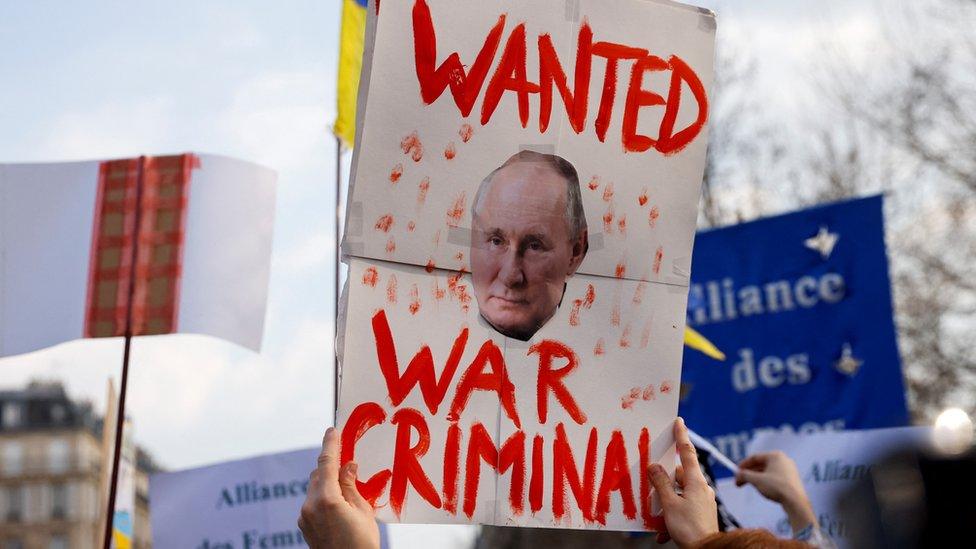Ukraine war: Were Russian soldiers shot after surrendering?
- Published
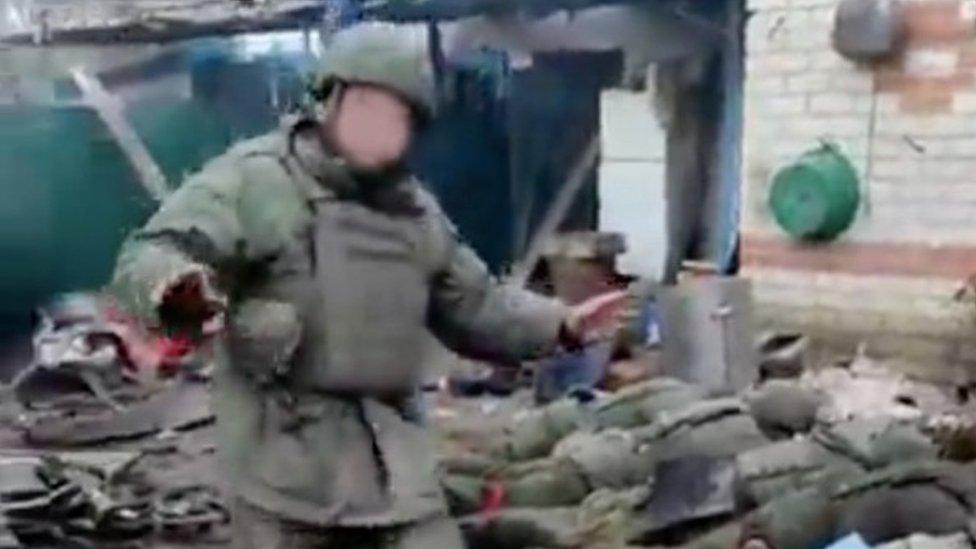
Russia has accused Ukrainian forces of executing a group of Russian prisoners, an action it has described as a war crime.
It follows the emergence of a video from the front line in eastern Ukraine showing the apparent surrender of a number of soldiers in an incident that ends in their deaths.
A Ukrainian official has claimed that the surrender was "staged" by Russian troops in an attempt to attack their captors.
The BBC has been attempting to piece together what happened from the available video footage,
Warning: This piece contains graphic images which some may find upsetting.
The incident happened on or before Saturday 12 November in Makiyivka, a village on the front line in Luhansk region.
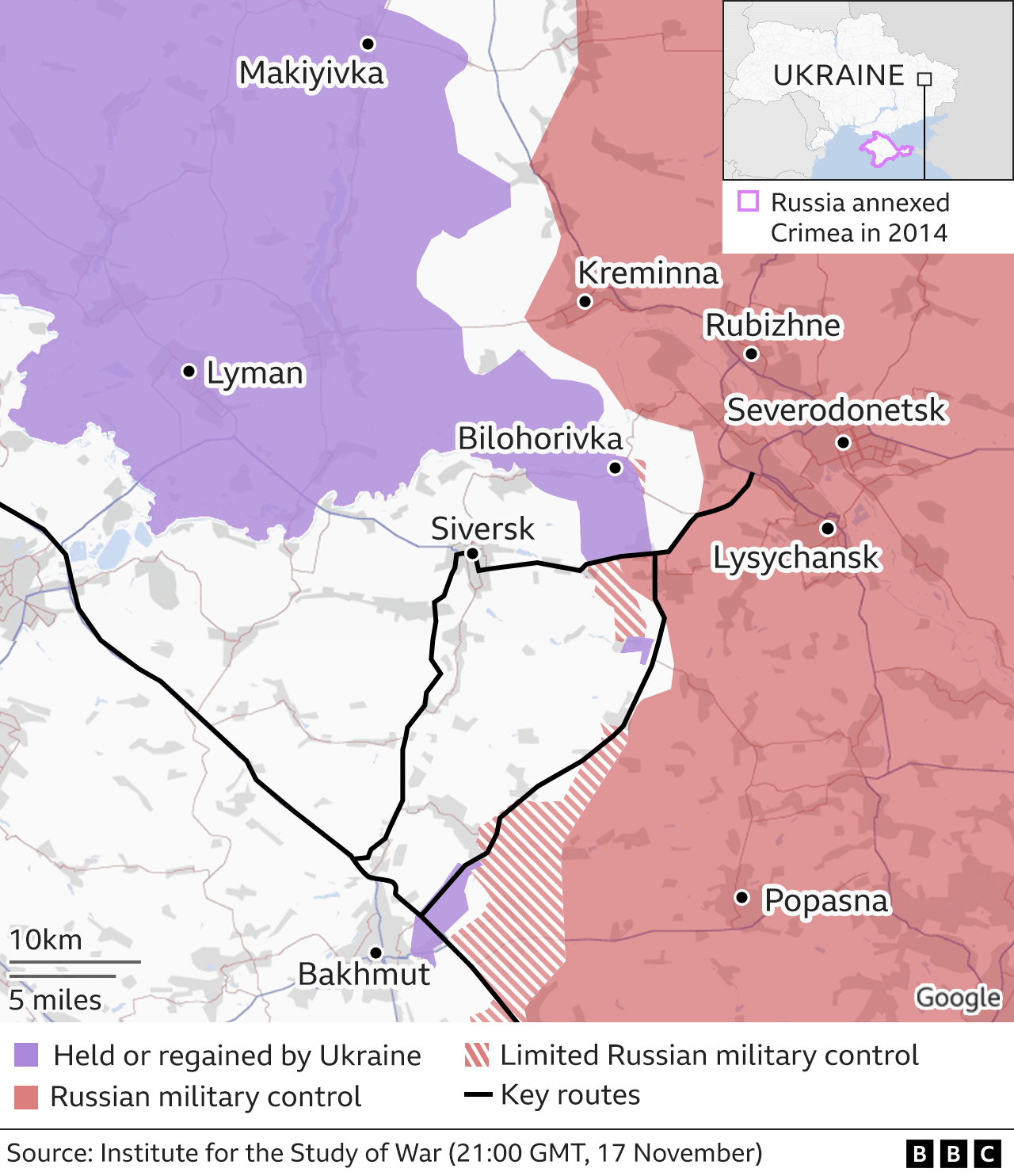

Drone footage appeared later that day and on Sunday on pro-Ukrainian sites showing the bodies of a number of uniformed soldiers lying on the ground in a farmyard.

Drone footage of the site of the killings
Part of this drone footage was used in a video posted online by the Ukrainian Ministry of Defence about military operations to retake territory from Russian forces in the Makiyivka area.
On 17 November, another sequence of videos emerged, this time filmed from the ground by a soldier on the move. He points his camera both at himself and members of his unit as they make their way across rough ground.
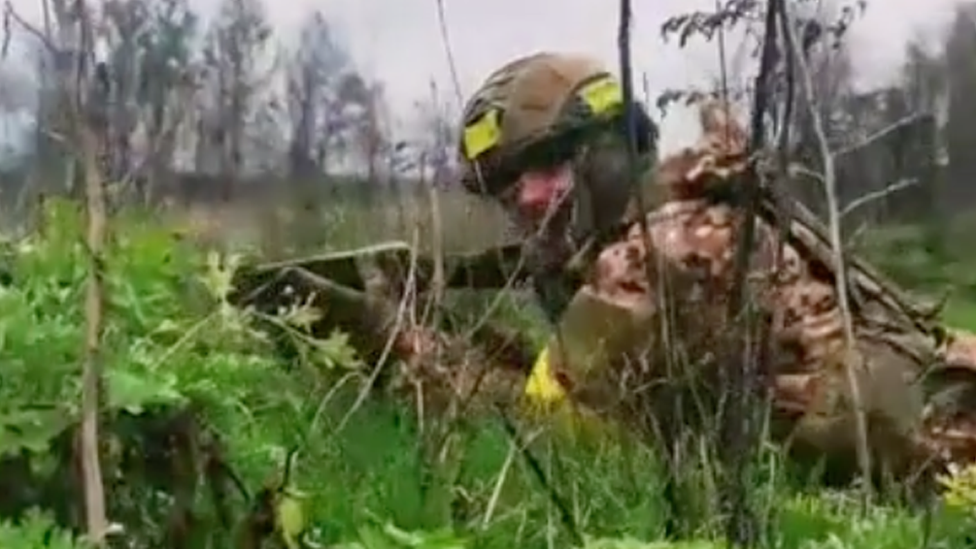
Soldiers wearing yellow tags approach across rough ground
They are wearing yellow tags - frequently worn as identifying symbols by Ukrainian soldiers.
As they approach what appears to be a farmyard, shouting can be heard in Ukrainian for anyone hiding inside a shed to come out.
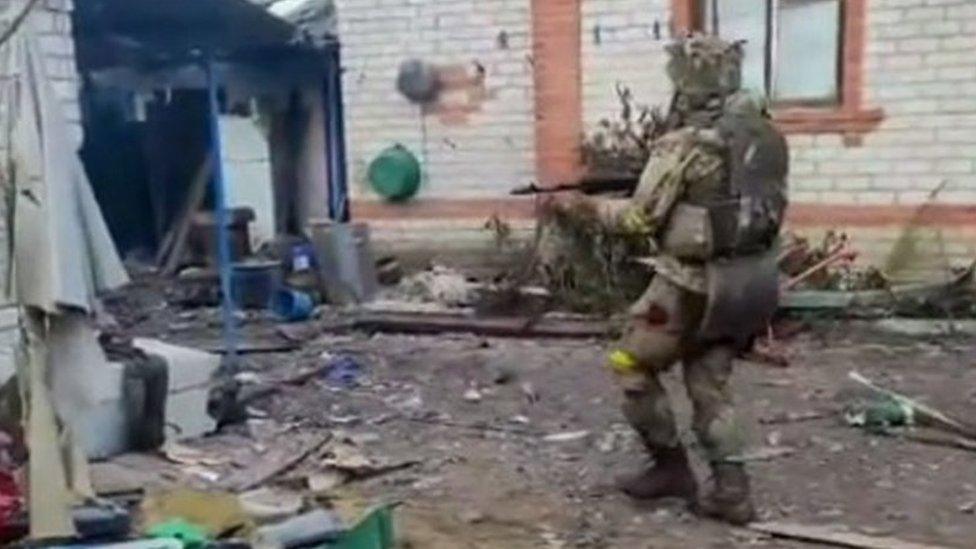
A soldier approaches a shed as his unit calls for those inside to come out
Soldiers in uniform emerge one by one and lie face down on the ground. Many of them are wearing red bands on their legs. Russian soldiers are known to wear red or white tags as a means of identification.

The captured soldiers are ordered to lie face down on the ground
Ukrainian voices can then be heard asking if everyone is out.
A man emerges from behind a wall. He is armed and opens fire, apparently in the direction of the camera. As he does so, the camera image falls away in blurred confusion.
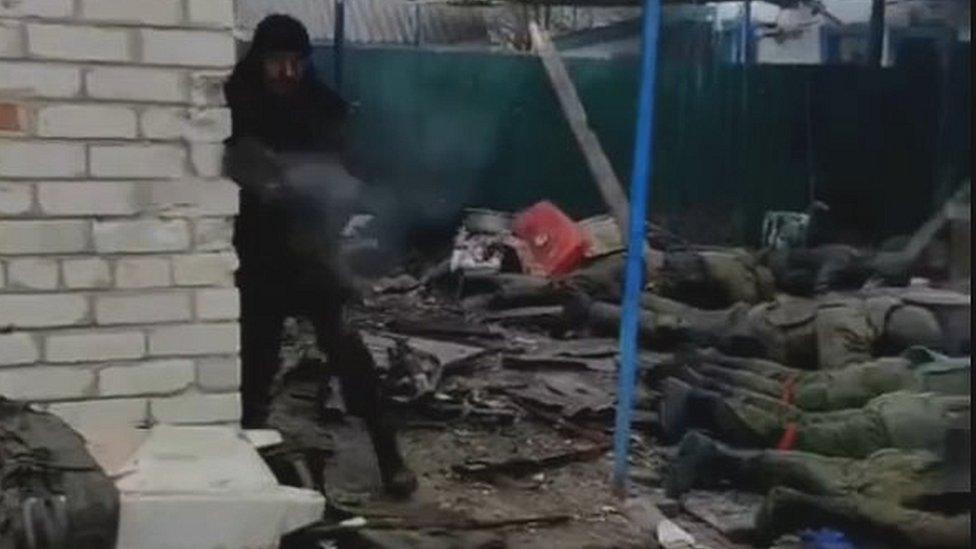
This is the moment a man bursts out and opens fire
We've confirmed that the aerial footage (from the drone) and the video filmed on the ground are of the same scene.
We've been able to match the two videos by comparing key elements. An entrance doorway - with what looks like a pole lying on it - is visible in both (highlighted in purple) as well as what looks like a red toy car in the farmyard (highlighted in orange).
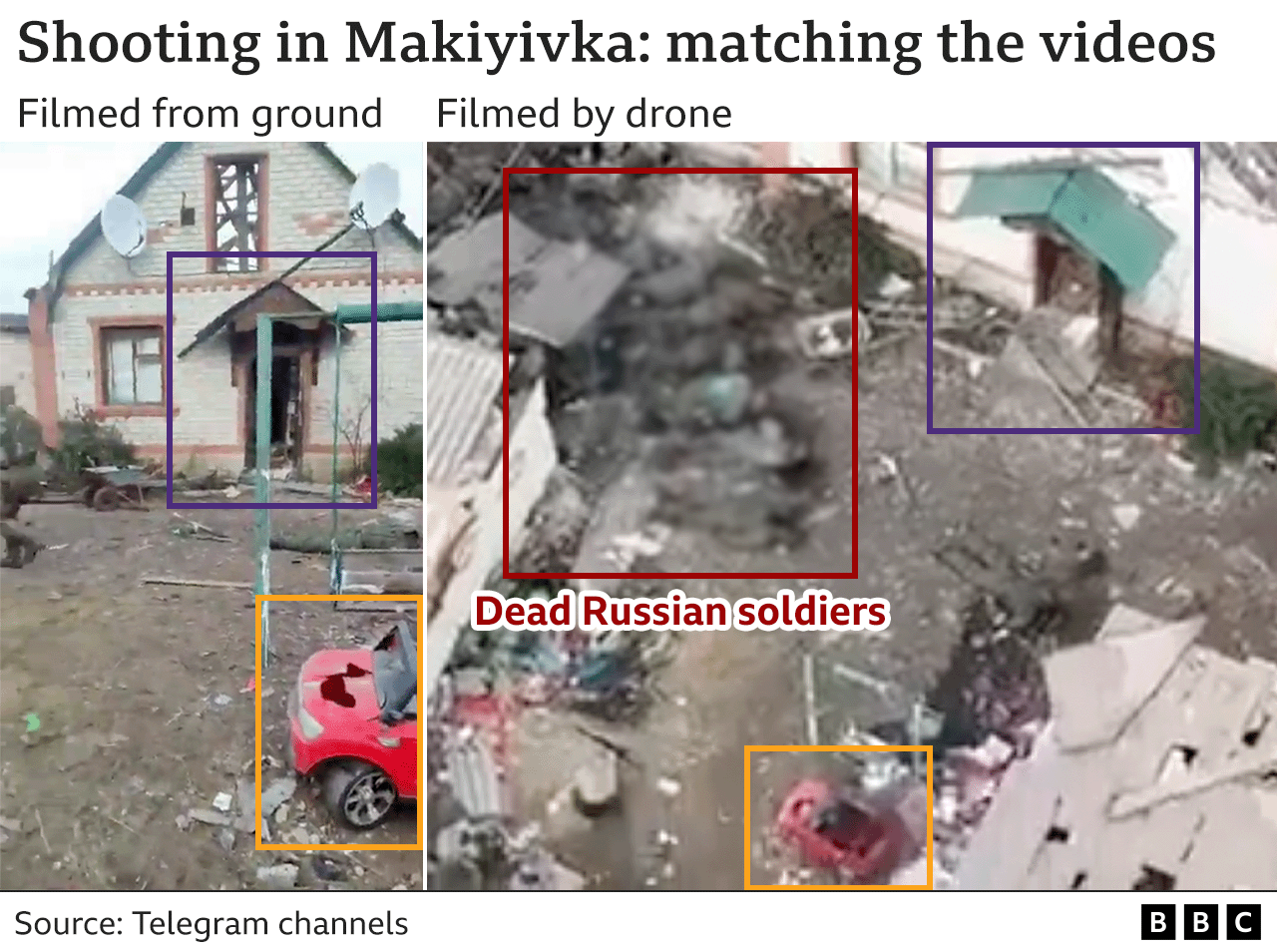
Two videos have emerged showing the scene from the ground and the air
We've also been able to identify the location of the drone footage (upper right) by comparing it to a Google Earth photo of buildings in the village of Makiyivka (lower image).
The shape of two buildings (identified with purple lines) appear to match in both images. The gap between the buildings (green box) and the line of the structure on the left (in orange) can also be seen in both.
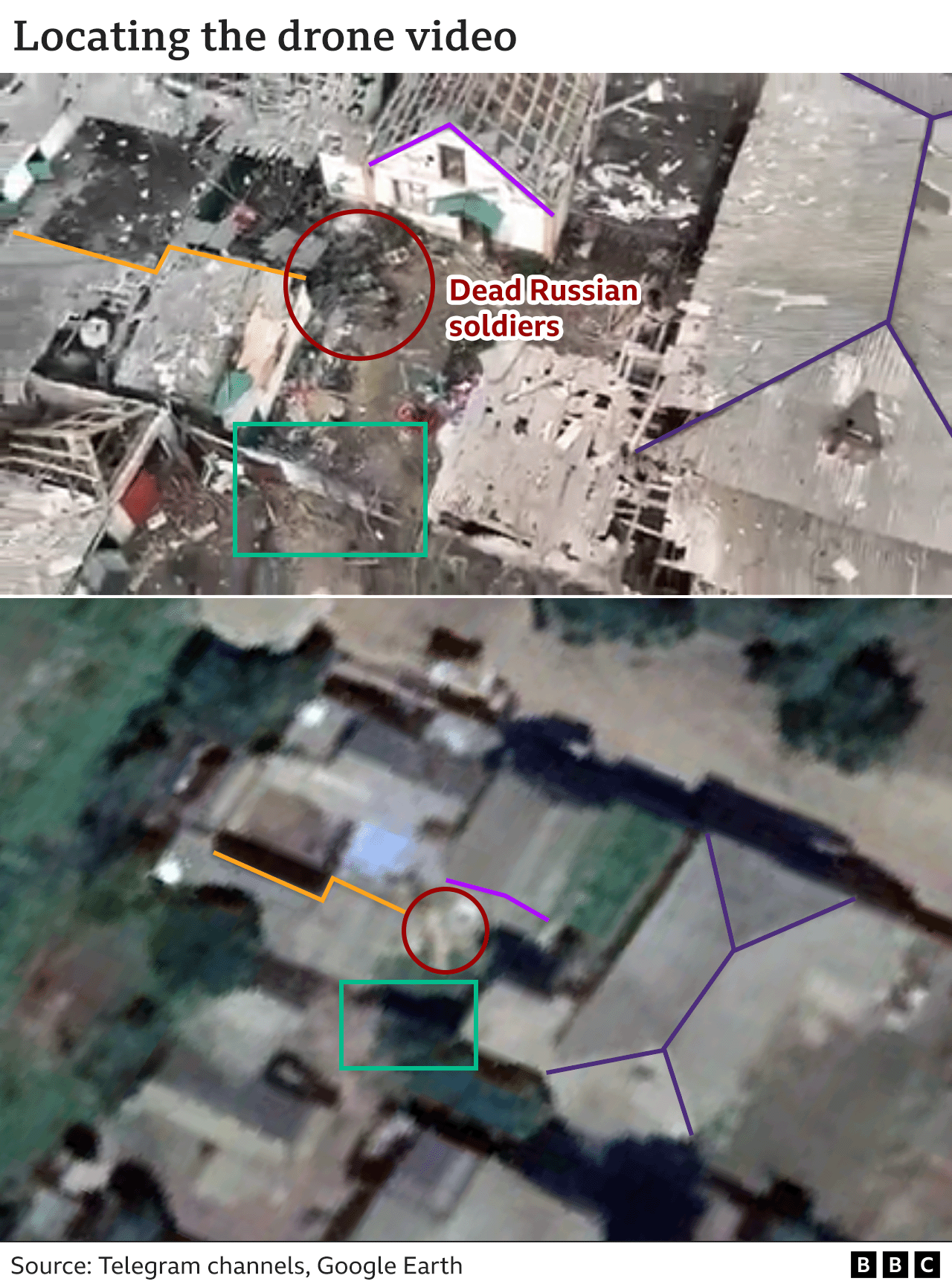
Russia's defence ministry has called the incident "deliberate and methodical murder" by shots to the head of more than 10 immobilised Russian servicemen. It goes on to say that it is "not the first and not the only war crime" by Ukrainian forces.
Killing or wounding a combatant who has laid down their arms and surrendered is a war crime.
Russia has been accused of multiple war crimes, including the killing of civilians in Bucha - which we have also investigated.
Surrender and exchanges of prisoners of war have become a significant factor in this war that has lasted almost nine months.
In a report this week, external, a UN mission in Ukraine reported abuses of prisoners by both sides. The vast majority of released Ukrainian prisoners they spoke to said they were tortured and ill-treated and nine people died.
Unlike Russia, Ukraine allowed access to detained prisoners. Some told the mission of summary executions and several cases of torture and ill-treatment.
Last weekend a gruesome video emerged that appeared to show the death of a mercenary at the hands of his own Russian Wagner group.
Unverified footage showed Yevgeny Nuzhin, 55, being hit on the head with a sledgehammer. Wagner boss Yevgeny Prigozhin later accused him of betraying Russia and his comrades.
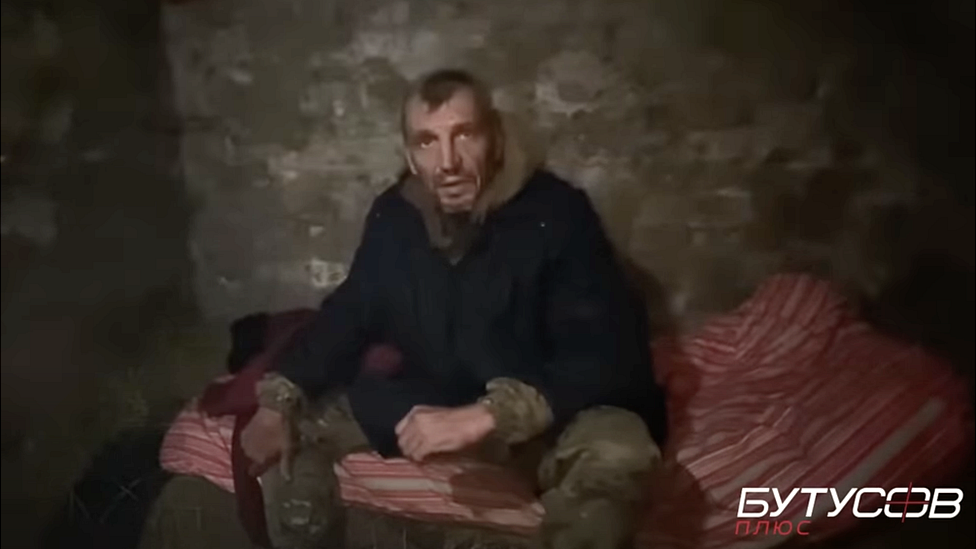
Yevgeny Nuzhin gave an interview to a Ukrainian journalist in September
Nuzhin, a convicted killer, had appeared in a Ukrainian video after he was captured, announcing he had changed sides. Just how he ended up in Russian hands is not clear but Ukrainian officials said he had not surrendered voluntarily so was not considered somebody who could be exchanged.
An exchange of prisoners of war took place on 11 November but Nuzhin was not one of them. He appears to have been attacked in Kyiv before being captured by the men who killed him.
Reporting by Daniele Palumbo, Richard Irvine-Brown, Tom Spencer, Erwan Rivault and Paul Kirby
This piece was first published on 17 November and has been updated.
Related topics
- Published14 November 2022

- Published20 September 2022

- Published20 July 2023
